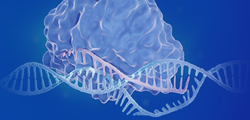-
REAGENT SERVICES
Hot!
-
Most Popular Services
-
Molecular Biology
-
Recombinant Antibody/Protein
-
Reagent Antibody
-
CRISPR Gene Editing
-
DNA Mutant Library
-
IVT RNA and LNP Formulations
-
Oligo Synthesis
-
Peptides
-
Cell Engineering
-
- CRISPR/Cas9 sgRNA
- CRISPR/Cas12a crRNA
- Prime Editing Guide RNA
- Base Editing Guide RNA
- HDR Templates
- gRNA + HDR Template Design Tools
- cGMP Guide RNA
- cGMP HDR Templates
- CRISPR/Cas Proteins
- CAR-T Knock-in Optimization Kit
- CRISPR Plasmids
- CRISPR gRNA Plasmid Libraries
- CRISPR Cell Lines
- Microbial Genome Editing
-
-
PRODUCTS
-
Most Popular Reagents
-
 Instruments
Instruments
-
Antibodies
-
ELISA Kits
-
Protein Electrophoresis and Blotting
-
Protein and Antibody Purification
-
Recombinant Proteins
-
Molecular Biology
-
Stable Cell Lines
-
Cell Isolation and Activation
-
 IVD Raw Materials
IVD Raw Materials
-
 Therapy Applications
Therapy Applications
-
Resources
-
- Pharmacokinetics and Immunogenecity ELISA Kits
- Viral Titration QC ELISA Kits
- -- Lentivirus Titer p24 ELISA KitHot!
- -- MuLV Titer p30 ELISA KitNew!
- -- AAV2 and AAVX Titer Capsid ELISA Kits
- Impurity Test ELISA Kits
- -- BSA ELISA Kit, 2G
- -- Cas9 ELISA KitNew!
- -- Protein A ELISA KitNew!
- -- His tagged protein detection & purification
- -- dsRNA ELISA Kit
- -- Endonuclease ELISA Kit
- COVID-19 Detection cPass™ Technology Kits
-
- Automated Maxi-Plasmid PurificationHot!
- Automated Mini-Plasmid PurificationNew!
- PCR Reagents
- S.marcescens Nuclease Benz-Neburase™
- DNA Assembly GenBuilder™
- Cas9 / Cas12a / Cas13a Nucleases
- Base and Prime Editing Nucleases
- GMP Cas9 Nucleases
- CRISPR sgRNA Synthesis
- HDR Knock-in Template
- CRISPR Gene Editing Kits and Antibodies
-
![AmMag™ Quatro Automated Plasmid Purification]() AmMag™ Quatro automated plasmid purification
AmMag™ Quatro automated plasmid purification
-
![Anti-Camelid VHH]() MonoRab™ Anti-VHH Antibodies
MonoRab™ Anti-VHH Antibodies
-
![ELISA Kits]() ELISA Kits
ELISA Kits
-
![Precast Gels]() SurePAGE™ Precast Gels
SurePAGE™ Precast Gels
-
![Quatro ProAb Automated Protein and Antibody Purification System]() AmMag™ Quatro ProAb Automated Protein and Antibody Purification System
AmMag™ Quatro ProAb Automated Protein and Antibody Purification System
-
![Target Proteins]() Target Proteins
Target Proteins
-
![AmMag™ Quatro Automated Plasmid Purification]() AmMag™ Quatro automated plasmid purification
AmMag™ Quatro automated plasmid purification
-
![Stable Cell Lines]() Stable Cell Lines
Stable Cell Lines
-
![Cell Isolation and Activation]() Cell Isolation and Activation
Cell Isolation and Activation
-
 IVD Raw Materials
IVD Raw Materials
-
![Quick
Order]() Quick Order
Quick Order
-
![Quick
Order]() Quick Order
Quick Order
- APPLICATIONS
- RESOURCES
- ABOUT US
- SIGN IN My Account SIGN OUT
- REGISTER

![Amino Acid Code Amino Acid Code]()
gene Related Biological Terms
This Biology terms dictionary provides query services for biology and biochemistry terms. Please enter the biology or biochemistry terms you want to search.
List by Alphabet: A B C D E F G H I J K L M N O P Q R S T U V W X Y Z
gene Related Biological Terms:
mutation (point or larger change) that results from changes within the structure of a gene.
The two copies of a particular gene present in a diploid cell (one in each chromosome set).
All of the alleles available among the reproductive members of a population from which gametes can be drawn.
control of gene expression through a complex myriad of regulatory genes and regulatory Proteins.
Gene splicing refers to the post-transcriptional processes leading to the removal (i.e., introns) and inclusion (i.e., exons) of sequences in the pre-mRNA, which ultimately shape the final protein-coding mRNA. Splicing reactions are controlled by the spliceosome, a large nuclear ribonucleoprotein complex (RNP) that catalyzes the removal of intron sequences from the pre-mRNA. Alternative splicing gives rise to protein variants or isoforms beyond the wild type protein and is, therefore, a source of diversity. Although alternative splicing may occur through different mechanisms, exon skipping is the most frequent in eukaryotic cells. Mis-splicing is implicated in various disease states such as cancer, neurodegeneration, and muscular dystrophies. Gene splicing also refers to molecular cloning techniques used in generating recombinant DNA constructs. For example, the coding regions of a gene may be pieced together into a vector (e.g., plasmid) for delivery into cells of choice (e.g., CHO cells) to drive protein expression.
Incorporation of new DNA into and organism's Cells, usually by a vector such as a modified virus. Used in gene therapy.
The movement of a gene fragment from one chromosomal location to another, which often alters or abolishes expression.
a gene that is essentially the same as another, but has mutational differences.
An approach that randomly disrupts genes throughout the genome by inserting a DNA element (usually containing a reporter). These DNA elements are sometimes fused in frame of the endogenous gene so that the reporter will be expressed in a similar pattern as the endogenous gene. The disruption usually mutates the endogenous gene."Although enhancer traps are widely used, certain gene traps were developed as an alteRNAtive to enhancer traps to capture open reading frame information. The identification of target genes using enhancer trapping was sometimes problematic because the site of reporter insertion could be as much as 100 kb from the target gene. This would require extensive characterization of the genomic insertion site to identify candidate target genes. gene trapping varies from enhancer trapping in that, instead of using a minimal promoter, gene trap vectors provide specific sequences that generate fusion RNA transcripts when inserted into a gene (See Fig. 1). This feature makes gene trapping (vs. enhancer trapping) especially advantageous in mammalian Cells that have complex genomic organization, including large Introns and small Exons, because the trapped gene can be identified by mRNA sequence. " From: [Durick K, et al. “Hunting with traps” genome research 9(11): 1019-1025. Nov. 1999] - nice review article.
A seizure that involves the entire brain. Generalized seizures are caused by electrical discharges originating from both hemispheres of the brain.
-
Top Search
-
Hot Glossary
-
Antibody
If you know of any terms that have been omitted from this glossary that you feel would be useful to include, please send detail to the Editorial Office at GenScript: website@genscript.com
If your term is adopted, we will send 1,000 EzCoupon points to your GenScript account.
-





































